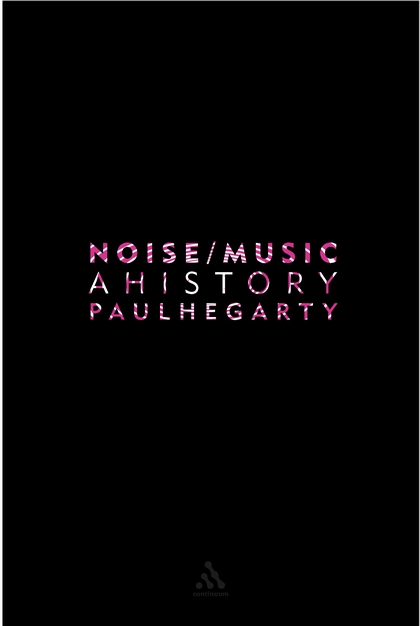
Sure, I understand that if I really wanted to make the proper reference to the book I would have used Branca’s 9th symphony, but after listening to it I can honestly say that I don’t enjoy the work at all.
I don’t want to specifically talk about Branca’s symphonies exactly. I just wanted to move away from the seemingly non-stop album reviews. They are tedious to read and possibly more tedious for me to write. I’m becoming more and more selective with regard to actual album reviews. I have my favorite bands, and I get some (ie. very little) good stuff via email, but from the beginning I have mentioned that I wanted to start to write something that went deeper than just a review. I’m not comfortable with the purpose of writing if it is just to sell something. That’s what I feel like when I am writing an album review sometimes, I feel like I am just trying to sell music, and I don’t think that the main purpose (or any purpose, for that matter) of a writer, or an artist, is to sell anything.
I began to touch upon things that I have been thinking about in a few of my more recent posts, regarding abstraction in music, temporality in music in my post about Autechre, a topic so seldom discussed in music regardless of genre. There was also the Glenn Gould connection post from a few weeks ago, but there have been other things I’ve been considering.
Perhaps Branca is, in fact, a good jumping off point for a discussion of the manipulation of temporality in music. When listening to his symphonies one must, in some ways, throw away everything that they think they know about listening to a piece of music and start over. And there are a lot of pieces of music that require just that.
My next few posts are going to attempt to tackle a few interesting cases of different ways that musicians play with the listener’s perception of time. These manipulations will happen in a variety of different ways, and to different ends. Some of the songs that I am going to be discussing will be taken from things that I have already talked about a little bit on the blog, while others will be taken from familiar bands looked at in different ways.
Temporality, and its use in music, is maybe the most fascinating element of organized sound, and the hardest to describe without getting all metaphysical. I think that I have noted in a few posts about how temporality is suspended in minimalist music, where the incessant repetitions create a void of sorts for the listener, allowing them to focus in on the sound between the sound; the creation of aural illusions where the listener is hearing something that perhaps isn’t written into the score. That is what I would consider a meditative disposal of time, more like a contradiction if you think about it. Minimalism subverts time by making it the most surface level characteristic of the music. The same rhythm, repeating over and over and over and over and over again ends up not being tedious, but rather creates a new kind of silence where the mind starts to filter out what is happening on the surface. One can hear resonance, and the collection of overtones and pure timbre.
I can’t help but think back to the time that I drove up to Toronto in 2005 or so, to catch a performance by the University of Toronto percussion ensemble. There was a performance of Cage’s 4’33”, and Varese’s “Ionisation.” Those pieces, though great, didn’t leave a mark on me as profoundly as did the piece that had just started when I walked in.
As I stood there in the entranceway to the concert hall a performance of James Tenney’s “Having Never Written a Note for Percussion” had just begun. I can’t do justice to the piece by trying to describe what the experience was like, though I will try.
And that’s part of the thing, is that this is a piece that is so simple in concept that capturing it in a recording could not possibly do it justice. The listener is an integral part of the piece. Imagine the slowest, most gradual crescendo that you could ever experience being played out on a single tam-tam (if I could venture a guess, it was being performed on a 40″ instrument) from a performer that was not visible. The only thing that could be seen was the front of the instrument, while the performer must have been kneeling behind it, and with soft mallets (and therefore no sounding attack) they gently built up the amplitude.
That’s it. The piece is simply an incredibly lengthy crescendo that is followed by an equally lengthy diminuendo. But being there you feel like you are standing inside the sound. For the first second that I walked into the room I could remember the break between the “silence” that I was experiencing just outside the door to the hall and the sound that I was now in the middle of while standing at the back of that hall. As I stood there that memory of the divide slowly faded and all that my mind could focus on was what was happening right there in front of me, and all around me. Time had stopped. In that time I could focus on every single little pitch and overtone that was created. The sound enveloped everything in the room, so present as to seemingly take a physical form. Now, the sound was not loud enough to make anyone recoil in pain, it was just in the room with us, creating a presence.
The piece built up so slowly that the idea of past, present and future were irrelevant. There were no more points of reference. Time had effectively ceased to exist. And that is something that is very difficult to get through on a recording.
I think that in this way Branca’s symphony (several of them, but I’m thinking of the 3rd specifically right now) and Tenney’s piece have a lot in common. They are contradictions of simplicity and complexity, of loud and quiet, something and nothing, all at the same time. Branca’s wall of microtones, as well as Tenney’s, find similar ways to grab hold of the most illusive element of music, and that is the manipulation of temporality. They grab a hold of it and turn the entire piece into the exploration of that one impossible thing.



